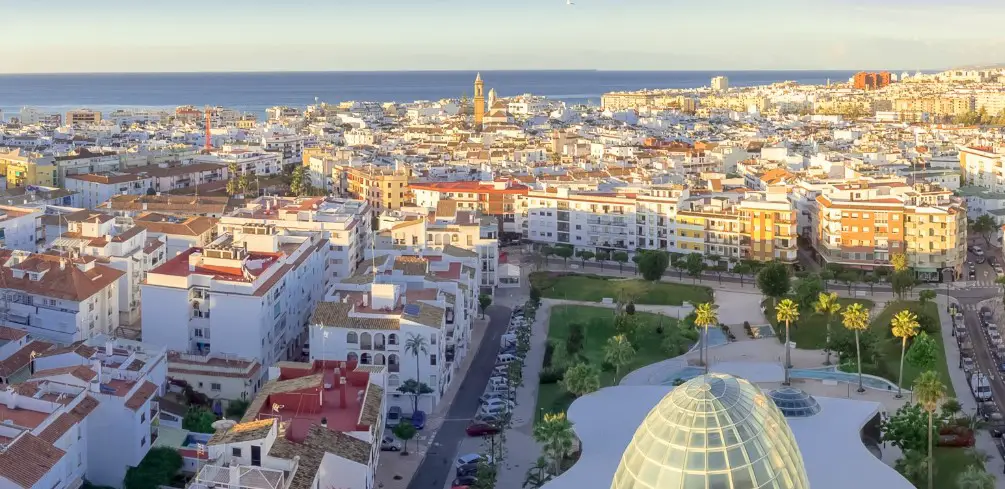One of the permanent doubts we have in towns that have been growing in recent years is whether they are still towns or whether they are already cities. When does a town stop being a town and become a city? What criteria are used to justify that it is one or the other? Is there a common definition or does each country interpret it differently? In this article we will delve into all these issues with the ultimate goal of discovering whether our beloved Estepona is a town or a city.
What the dictionary says.
Google and Oxford Languages definitions are not very clear.
It occurs to us that a good way to know what we mean by town or city is to take a look at google. Good idea? Well, the truth is that not so much because in both cases the definitions we found from Oxford Languages are sufficiently vague and generic as not to clear up the mess.
Oxford Languages defines a village as a “population smaller and with a smaller number of inhabitants than a city dedicated especially to activities related to the primary sector”. City, according to the same source, is the “population inhabited by a group of people who are mainly engaged in industrial and commercial activities”. Or in its second meaning: “population whose main activity is industry, commerce or other activity not related to farming and agricultural exploitation”.
Let’s go to the RAE.
According to the Real Academia Española, the definition of town is “city or village”. So we are off to a bad start. In its second meaning it speaks of “lower category population”. Making friends. In reference to a city, it tells us that it is a “group of buildings and streets, governed by a city council, whose dense and numerous population is usually dedicated to non-agricultural activities”.
Ultimately, dictionaries do not help us to discover clear boundaries or differences. It seems that towns have to be dedicated to agriculture and cities not so much, but it is not clear to us neither how this dedication is measured nor the population density. On the other hand, as far as we know, there are town halls in towns and cities, so we cannot draw too many conclusions.
2. What the story says.
A review of the historical concepts of town and city.
The concepts of town and city have evolved throughout history. Human settlements have been the subject of multiple studies and research. Ancient cities have nothing to do with medieval ones. Nor do pre-industrial revolution cities have much relation to more modern ones. All these factors, added to the increase in the human population on earth, have been blurring the two concepts.
In its vulgar meaning, the difference is made mainly by the activity carried out by the people living in the same nucleus. In the villages, the vast majority of the population is engaged in farming. In the cities, to everything else: industry, commerce, services…
At the time, it was suggested that a percentage of agricultural activity that did not reach 25% of the total could be an indicator of a city. But the idea did not take off.
3. What Europe says.
The definitive argument: the number of inhabitants.
When looking for arguments without fissures, someone came up with the idea that the best way to differentiate towns from cities was by the number of inhabitants. Finally, something to hold on to.
Considering that this metric is a good measure to define what is what, the next logical step was to agree on a number. If a population has less than n inhabitants, village. From n+1, city. Easy, isn’t it? Well, neither.
In 1966, an attempt was made to establish a single criterion at the European level to set the scale once and for all, but no agreement was reached. As a result, each country has a different limit.
4. What Spain says.
In Spain, it is a town if…
The National Institute of Statistics, following the guidelines of the OECD (Organization for Economic Cooperation and Development) defines a village as those municipalities with a population of less than 10,000 inhabitants and with an economic activity based on the primary sector.
If it has more than 10,000 inhabitants, in Spain, it is already considered a city.
5. So, Estepona: is it a town or a city?
In the case of Estepona, with well over 70,000 inhabitants, there is no doubt that it is a city. It is in Spain and would be in any country in the world.
In the United States, more than 2,500 inhabitants and a population density per square mile is enough to be considered a city. In France, 2,000 inhabitants is enough, and in India, which is more demanding, they set the limit at 20,000 inhabitants.
Estepona also meets other factors to be called a city: population density, economy based on the service sector, presence of an industrial park, stores, businesses, leisure facilities, public transport, administrative and government services…

Of course, nothing against anyone who still thinks it is a village and wants to continue calling it that. In fact, this article was born out of trying to respond to a statement we saw in the comments of a Facebook group regarding the post: Is Estepona the most expensive city in Spain? Simply, if you read somewhere “the city of Estepona” know that there are plenty of arguments to support that statement. And if we disagree, we can comment and discuss, there is always time for that. 🙂





Estepona is a town with a village mentality which makes it very different and nice compared to other towns. We love it here.